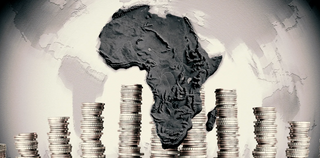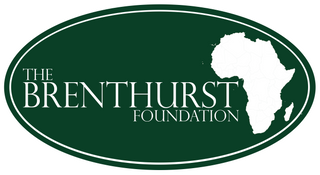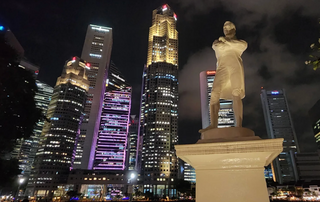News
Two Truths and a Lie – Addressing Africa’s Race for Inward Investment
The point of the exercise, two truths and a lie, is that they are all pretty believable except not all accurate. What is true is that attracting foreign direct investment is a necessary component of Africa’s growth equation.

Two of these statements are true; one is a lie. Can you catch which is? (Before I tell you shortly, that is.)
Tax competition leads to a negative economic outcome, fostering a race to the bottom.
Sub-Saharan African countries incur the most substantial revenue losses owing to tax competition, compared to other regions.
Sub-Saharan African countries collectively experienced forgone revenues of roughly $35-billion in 2019, the same as the continent’s food import bill.
It has been said and is broadly accepted that to grow Africa’s economies at a rate sufficient to provide opportunities for its fast-growing populations, the continent needs injections of foreign direct investment (FDI). In 2022 FDI to Africa, constituting 3.5% of global FDI, was $45-billion, a 44% drop from the previous year and back to pre-Covid-19 levels. (According to the 2023 World Investment report, this decline resulted from a return to the normal after an anomalous peak in 2021 caused by a single large corporation reconfiguration in South Africa.)
Nevertheless, Africa’s minuscule FDI inflow is a valid cause for concern compared to other parts of the world. FDI to developing Asia was $662-billion, more than half of total global FDI; Latin America and the Caribbean did $208-billion. Current global tensions between China and the US have been deemed an added risk to the continent. According to the International Monetary Fund (IMF), if the world divides into isolated trade blocs centred on China or the US/EU, sub-Saharan Africa faces a severe risk with an estimated permanent GDP decline of up to 4% after a decade, surpassing Global Financial Crisis losses. These geopolitical tensions may further cut off $10-billion in FDI and official development assistance annually.
The recent spate of coups in West Africa, the increased debt burden and dampened economic activity from Covid-19 and the supposed impact of geopolitical risks such as Russia’s war in Ukraine do nothing but increase instability and apprehension about the safety and security of investments, a factor of our economic performance. And it makes sense. Imagine you’re planning to build your dream house and have found the perfect plot of land. However, the neighbourhood has a history of sudden storms (destabilising occurrences) that can damage your property. Just as you’d hesitate to build without assurance of stability, investors are cautious about committing capital to places with political and socioeconomic turbulence. They need a secure foundation to ensure their investments can weather any storm and grow into something lasting and valuable.
Why the need for investment?
By 2050, Africa is projected to double its population to 2.5 billion people. Nigeria’s population, at current rates, will increase to more than 400 million, bigger than the current populations of the US and France combined, and third only to India at 1.7 billion and China at 1.4 billion. At the same time, currently at 57 million, Tanzania will mushroom to become the world’s 14th-largest country with 138 million people.
The implications for the African continent cannot be understated.
Consider that 600 million people, or 43% of the entire African continent’s population, still lack access to electricity, and nearly one billion (in a total population of about 1.3 billion) lack access to clean cooking. As of 2022, the continent faced an annual financial gap of $90-billion to meet its energy transition and access goals. Given African countries’ low domestic resource mobilisation efforts and the gap for food, health, infrastructure, governance etc, one starts to appreciate the dearth of financial resources and the depth of our need for investment, among other factors.
This also comes on the back of low and deteriorating productivity on the continent; stalled diversification efforts, which, between 2000 and 2020, declined by six points; export competitiveness remaining a challenge; and job creation in Africa that relies heavily on small firms, with almost 95% employing fewer than five individuals. Given the burgeoning working-age population, this trend restricts capital investment and is cause for concern.
Also, Africa’s share of global per capita income has halved to just 15% since the hope-filled days of independence in 1960. Today, the continent’s countries are vulnerable to a perfect storm of a burgeoning youthful population, insufficient infrastructure, few low-quality jobs, seeming donor neglect and a seemingly malign foreign interference. It is thus unsurprising that more than one in two Africans recently surveyed by Afrobarometer do not have a particularly exciting view of their country’s economic condition in the next 12 months, and 65% of people think their countries are going in the wrong direction.
Africa’s problems are many, and solving them requires money, a lot of it.
The usual spiel: “You get a holiday! You get a holiday.”
Countries today are fervently vying to position themselves as hotbeds for investment, crafting an alluring range of strategies and promotional content to entice investment. This has often included lax investment policy frameworks, the use of special economic zones, investment promotion agencies, and, more notoriously, tax rebates and holidays.
Yet, the preferred modus operandi to attract investors and investment through reduced taxes and flamboyant tax holidays has not been without its challenges. There has been a raging debate among practitioners and scholars about the utility of tax incentives, especially as African countries seem to be embarking on a race to the bottom to position themselves as the most attractive countries and regions. In 2019, sub-Saharan African countries collectively lost an estimated $46-billion as a result of tax incentives – $10-billion more than the entire continent’s 2019 food import bill ($35-billion); $5-billion more than it received in foreign assistance in 2019 ($41-billion); $10-billion more than its 2020 debt service payments ($35-billion); $1-billion more than the entire continent received in foreign direct investment flows; and the sum of Rwanda, Mauritius and Botswana’s 2022 GDP.
The point of the game, two truths and a lie, is that they are all pretty believable except not all accurate; there is a slight twist to one of the believable statements. This, by the way, means number three is the lie – almost true but an understatement of what it is. Sub-Saharan African countries collectively experienced forgone revenues of roughly $46-billion in 2019, not $35-billion. Jarring.
Lessons from elsewhere?
Ethiopia has often been lauded as one of the continent’s best in class for attracting investment through its special economic zones. While its recent political instability has had a bit of a damning effect on the economy, the country’s past efforts still offer some critical lessons in this regard.
Firms did not just flock to Ethiopia because they built sheds; firms chose to set up there for a host of reasons: a package of incentives (including duty-free imports of capital equipment and tax exemptions of up to seven years) combined with cheap electricity, cheap rentals, duty-free access to the US market through the African Growth and Opportunity Act (especially important for the apparel sector), one-stop-shop services in each facility, including customs and permits, and plentiful labour at cheap rates.
As the former senior minister and special adviser to Ethiopia’s prime minister, Arkebe Oqubay, shared in the 2022 Annual Alice Amsden Memorial Lecture on Industrial Hubs and Late Development, Ethiopia’s strides toward industrialisation were rooted in meticulous research and meticulous planning, a process marked by rigorous ownership and dedication. Backed by extensive white papers and debated by more than 100 experts, their industrial park strategy was methodically crafted, forming a robust foundation. The pivotal success of these parks hinged on the deliberate attraction of top-tier firms and the provision of a package of amenities and resources they needed to operate successfully, eschewing any shortcuts in the process. Crucially, integration with local communities and cities stood as a linchpin, emphasising the essential development of soft and hard infrastructure linkages. This is how Ethiopia’s focused industrialisation policy resulted in a staggering FDI inflow, soaring from $5-billion in the two decades preceding 2013 to a remarkable $30-billion between 2013 and 2022.
Developing nations like Ethiopia recognise incentives’ pivotal role, even if investors might downplay their importance. However, balancing attracting investments and optimising revenue generation remains a tightrope for governments. The difference – success factor – is not simply with incentives but the kinds of incentives and how coordinated and synergistic they are to attract prosperous and prosperity-creating enterprises. Essentially, it is not just about the hard infrastructure; it is also about the soft infrastructure.
Another lesson that emerges is that success comes from doing the hard work.
There is no substitute for policy reform, or for the targeting of particular investment sectors and individuals, or of the need for assiduous follow through. A colleague once said: “It’s not the hook-up that counts; the value is in [everything that makes] the long-term relationship.”
For African economies to thrive, there is a need for African governments to emulate the approach taken by the pockets of success we have in Ethiopia and our successful Southeast Asian counterparts: prioritising the welfare of their people and focusing on the broader socioeconomic advancement of the populace, and fostering intellectual innovation as the cornerstone of development – operating largely above parochial political interests.
Take the case of Ghana, too – a falling donor darling.
Ghana’s economic downturn stems from a stark discrepancy between its oft-pitched image of political stability and investor-friendly climate and the reality of fiscal mismanagement. Understanding what happened in Ghana requires a cursory look at a series of bad choices made by its political elite. The early 2000s optimism around Ghana, fuelled by successful efforts to reintegrate into international markets and the discovery of oil, led to a deepening of its known bad habits: aggressive borrowing and spending during election cycles.
As analyst and VP at the Accra-based think tank Imani Centre for Policy and Education, Bright Simons, outlines, the convergence of the global financial crisis in 2008, a public sector labour market adjustment and the realisation that the oil boom alone couldn’t transform Ghana into a petrol state prompted a reliance on private capital markets, which was a huge part of its downward spiral. The recent and questionable allocation of Covid-19 relief funds, with minimal actual emergency response, also fuelled domestic unease and economic strain. By 2021, extensive borrowing raised concerns over fiscal sustainability, prompting a loss of market confidence. The government’s shift in strategy from concessional loans to extensive commercial borrowing left it less accountable to policy oversight. Attempts to secure additional funds through a second Eurobond issuance within a short timeframe heightened scepticism among investors.
Facing economic challenges and public resistance, the government attempted revenue-raising measures, including the controversial e-levy, exacerbating confusion and apprehension. With a split parliament adding further uncertainty, debates around the budget became contentious.
Despite initial reluctance, the government returned to the IMF in July 2022 for financial support, leveraging its international reputation to secure an agreement for a provisional IMF programme in December 2022. In essence, and as Simons puts it, Ghana’s creditworthiness has suffered due to the government’s “fiscal adventurism.”
The lesson here is that Ghana’s economic challenges highlight the imperative of sustainable fiscal policies and transparent approaches to regain investor – domestic and foreign – trust. The nation risks losing vital investments and compromising long-term economic stability without addressing underlying issues.

The nation’s economic posturing and celebrity-led gimmicks may not be enough to attract the right kinds of investment and interest necessary. Unfortunately, it is not the leaders that suffer; it is the lives and livelihoods of the average Ghanaian that are found wanting.
Attracting FDI is not a nice to have, it is a necessary component of our growth equation. Addressing the politics of getting and maintaining it is imperative to our success if African countries are to create successful enterprises and jobs for their burgeoning populations.
So, what to do?
Get a hold of the politics: Political manoeuvrings and the unwillingness to appreciate reason when an opportunity for a kickback exists are part of why our investment-attracting efforts are subpar. The political premium of doing business on the continent is too high. The extorting gatekeepers and the systems they set up to make investment difficult must be abolished through protecting whistle-blowers, utilising ombuds and holding people to account – that is, firing the thieves. If we don’t check the politics, we will continue to lag in our domestic and foreign investment attraction efforts.
Whole-of-government approach: Successful investment promotion efforts exist where there is buy-in from the government. This allows agencies to cut across bureaucratic rules and regulations, red tape, and expedite processes to support the investment community. Secondly, the allure of FDI must align with government policies to foster a genuinely business-friendly environment. Clear comparative advantages in the cost of doing business, taxation, regulation and risk are pivotal. Otherwise, the money goes elsewhere. Special Economic Zones can play a crucial role, but their success hinges on addressing investor frictions, especially visa regimes and red tape and ensuring their effective functioning.
Institutionalise investment promotion: Attracting FDI should be a consistent and carefully targeted process with deliverables and accountability mechanisms. Akin to successful models such as the Economic Development Board (EDB) of Singapore or the Costa Rica Investment Promotion Agency in Costa Rica, it should operate through an independent institution.
Proactivity: At inception, Singapore’s first overseas investment promotion outfits, based in Hong Kong and New York, were charged with “knocking on doors to explain Singapore”. The top 500 American firms received direct mail with information on Singapore and its investment potential. This approach of seeking out specific investors has been a core feature of successful investment promotion efforts.
Hoping they will come is a losing strategy
Countries must forge an inclusive national development narrative, publish a national investment plan, and prioritise operational strategy. They must then seek out the desired investment with the underlying objectives of job creation and knowledge and technology transfer, deciding which investments to attract and accept.
Stability is critical: Social, political and economic stability are all big sells – the less unstable and violent a country/region, the better it is for long-term and sustainable investment.
Be strategic about incentives: The evidence shows that we must not give incentives for giving sake; they must be strategic and provide the return we desire. Albeit somewhat tautological, incentives must incentivise specific action(s) that benefit recipient countries, not just for business relocation.
Don’t leave the local enterprises behind: At the end of the 1980s, Singapore’s EDB, for instance, changed course to a dual focus on both domestic and foreign firms. It helped match the domestic market with foreign firms through the Local Industry Upgrading Programme and incentivised foreign affiliates to transfer knowledge to local firms and people. This was key to building the skill level of Singapore’s workforce from low-skilled to hi-tech and high-skilled labour.
In 1995, Singapore EDB’s Promising Local Enterprises programme achieved its target of producing 100 “promising local enterprises”, each with a turnover of more than S$100-million. It was intentional, and we can do the same.
We need to be more intentional about creating the right kinds of environments that attract investors, enable businesses to succeed and create jobs, all while diligently committing to seeing these stated objectives through over the long term. It’s high time we stop being the butt of every development joke; the next generation deserves better.
This article originally appeared on the Daily Maverick
Photo: iStock | Rawpixel


